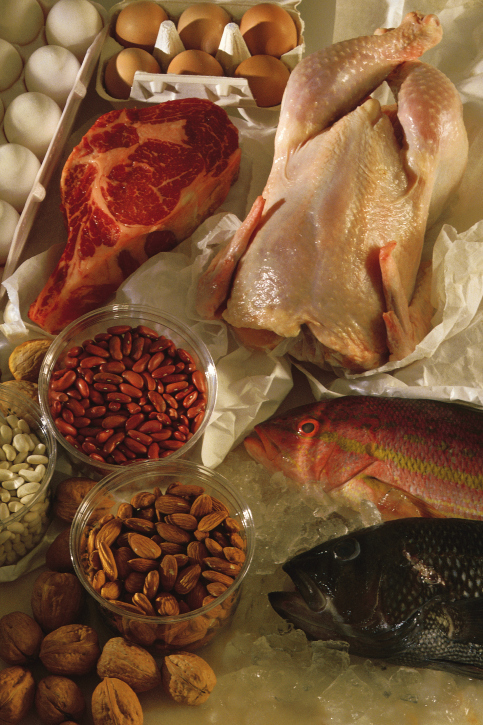Meeting Your Protein Needs Without the Meat
 Whether you’re trying to build muscle, lose weight or control your blood glucose levels, making sure you get enough protein in your eating plan is important. Protein is a major nutrient that we all need for good health. Protein is part of every cell, tissue, muscle and organ in the body. In addition, enzymes, hormones and other body chemicals are made of protein. We have to make sure we eat enough of it to give our bodies what they need.
Whether you’re trying to build muscle, lose weight or control your blood glucose levels, making sure you get enough protein in your eating plan is important. Protein is a major nutrient that we all need for good health. Protein is part of every cell, tissue, muscle and organ in the body. In addition, enzymes, hormones and other body chemicals are made of protein. We have to make sure we eat enough of it to give our bodies what they need.
How does protein help with weight and diabetes control?
There has been a lot of hype about high protein/low carb meal plans. It’s important to realize that while protein is important, we all need a balance of protein, carbohydrate and fat in our diets. But newer research has shown that a slightly higher-than-usual protein intake may help with weight loss, make it easier to manage blood glucose levels, and even boost heart health.
How much protein should I eat?
You might be surprised to learn that we don’t need all that much protein. The Dietary Guidelines for Americans recommends that we get between 10% and 35% of our daily calories from protein. On average, men need 56 grams of protein daily (about 8 ounces), and women, 46 grams daily (about 6 ounces).
What are healthy sources of protein?
Most people think of meat as being a protein food, and they’re right. Each ounce of meat has about 1 ounce of protein. Some animal sources of protein are healthier than others, like chicken and fish. Plant foods are also a source of protein, and the good news is that they provide many other nutrients without the extra fat. Remember to watch the portions of all the foods you eat, as too many calories–even from healthy foods–may lead to weight gain. Try adding one or more of these protein-rich, low-calorie foods to your meal plan:
- Eggs: One whole egg has 6 grams of protein and 78 calories. Don’t worry too much about the cholesterol, as dietary cholesterol has little, if any, effect on the amount of cholesterol in your blood.
- Greek yogurt: Four ounces of plain, low fat Greek yogurt has 11 grams of protein and 83 calories. It’s delicious with fresh or dried fruit, nuts, or cinnamon.
- Dried beans: One-half cup of cooked beans (black beans, kidney beans, chick peas, lentils) has 8 grams of protein and 114 calories. Try a meatless meal of black beans and rice, or vegetarian chili with beans.
- Pumpkin seeds: Pumpkins aren’t just for pie or Jack o’ Lanterns. One ounce of pumpkin seeds (also called pepitas) has 9 grams of protein and 148 calories. Eat them as a snack, or sprinkle on salads or soup.
- Almonds: One-quarter cup of almonds has 8 grams of protein and 200 calories.
- Quinoa: Grains have protein, too. One-half cup of cooked quinoa has 4 grams of protein and 111 calories. Eat quinoa as a side dish, or use it in casseroles, soups or stews.
- Amaranth: Known as one of the “ancient” grains, amaranth is high in protein: one-half cup has 5 grams of protein and 126 calories. Try it in place of oatmeal for breakfast.
- Edamame: Immature (or “green”) soybeans are a tasty treat. One-half cup of steamed edamame has 11 grams of protein and 127 calories.
- Soy milk: One cup of plain soy milk has 6 grams of protein and 90 calories. Choose plain or unsweetened soy milk over flavored, which has more calories and carbohydrate.

